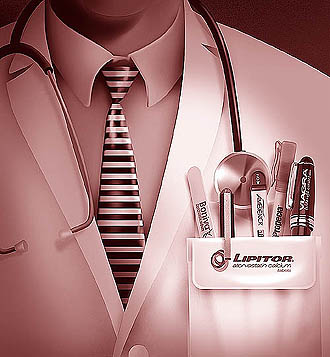|
Medicare was billed $116 million for off-label antipsychotics used to dope nearly 1 in 7 nursing home residents, mostly for dementia
By TERRY J. ALLEN
In These Times.com
[June 24, 2011] - Up to 30 percent of U.S. health care expenditures are wasteful, Medicare’s chief actuary estimates, and Medicare could trim up to $150 billion from its $500 billion 2010 tab without harming care. Here are some low-hanging billions in waste and fraud and poor practices.
- Punish Pharma Phraud The $4 billion worth of medical-related fraud the feds recaptured last year is presumably a fraction of the taxpayer-subsidized scams that pharma got away with. The top 10 federal False Claims Act settlements in 2010 involved health care, with pharmaceutical company fraud accounting for eight.
- Kill Pay to Delay When patents are expiring, drug companies pay off other firms to delay marketing cheaper generics. According to the Federal Trade Commission, the deals raise costs for consumers, including Medicare and Medicaid, by $3.5 billion a year.
- Don’t Dope for Dementia Most of the antipsychotic prescriptions Medicare paid for in the first half of 2007 were “erroneous,” the Health and Human Services inspector general found. During that period, Medicare was billed $116 million for off-label use of antipsychotics to dope nearly 1 in 7 nursing home residents, mostly for dementia. Not tested for or known to ameliorate dementia, the antipsychotics were promoted by companies that paid kickbacks to doctors, the Center for Medicare and Medicaid Services reported.
- Mandate Infection Controls About 1 in 10 hospital patients acquire infections that cause preventable deaths and create $6.7 billion to $11 billion a year in extra costs.
- Bargain For Drug Prices Congress barred Medicare and Medicaid from negotiating bulk discount rates, thereby funneling an estimated $14 billion a year from taxpayers to drug companies.
- You’d Better Shop Around Drug companies charge Americans far more for brand-name meds than much of the world pays. If U.S. consumers paid the same as Canadians (rather than 38 percent more), they would have saved $50 billion in 2003, Boston University researchers found.
 Cut DTC Advertising Only the United States and New Zealand allow direct-to-consumer drug ads. U.S. health care and pharma laid out $4.5 billion in 2009 for DTC. Cut DTC Advertising Only the United States and New Zealand allow direct-to-consumer drug ads. U.S. health care and pharma laid out $4.5 billion in 2009 for DTC.
- Bar Office Visits Each day, 100,000 pharma reps visit America’s 311,000 office-based physicians to influence drug choice through perks and junkets at a cost of $19 billion a year.
- Revamp FDA Drug Approval Require that new drugs be tested not only against placebos, but against existing treatments. For example, it turns out Avastin ($50 per injection) was little different from Lucentis ($2,000 a shot) for treating macular degeneration. In 2008, 480,000 Avastin shots cost Medicare $20 million, while only 337,000 shots of Lucentis totaled $537 million.
- Make Polluters Pay Prevention through lifestyle change is good, and it’s fun to watch Michelle Obama dance and garden, but it’s better to punitively fine industrial polluters and force them to curb the use of environmental toxins linked to asthma, heart disease, mental retardation and cancer.
- Implement Evidence-Based Testing Expensive and often invasive diagnostics can do more harm than good. The New York Times reported that in 2009, Medicare paid doctors more than $100 million for nearly 550,000 colonoscopies—with 40 percent going to patients over 75 for whom routine screening is neither safe nor effective. Medicare spent more than $50 million in 2008 on equally ill-advised routine screening for prostate cancer in men 75 and older, and for cervical cancer screening in women 65 and older with previously normal Pap smears. Medicare pays $1.6 billion on drug-coated cardiac stents, when studies show them no more effective in preventing heart attacks or death than drugs or lifestyle changes.
- Regulate BigPharma Profits BigPharma justifies its massive profits by arguing that a new drug costs $1.32 billion to develop. But after government grants and tax breaks, the real figure is $55 million.
Public funding should trigger profit limits. Add savings like these to the elimination of tax breaks for rich individuals and corporations, and U.S. health care will get a lot healthier.
|